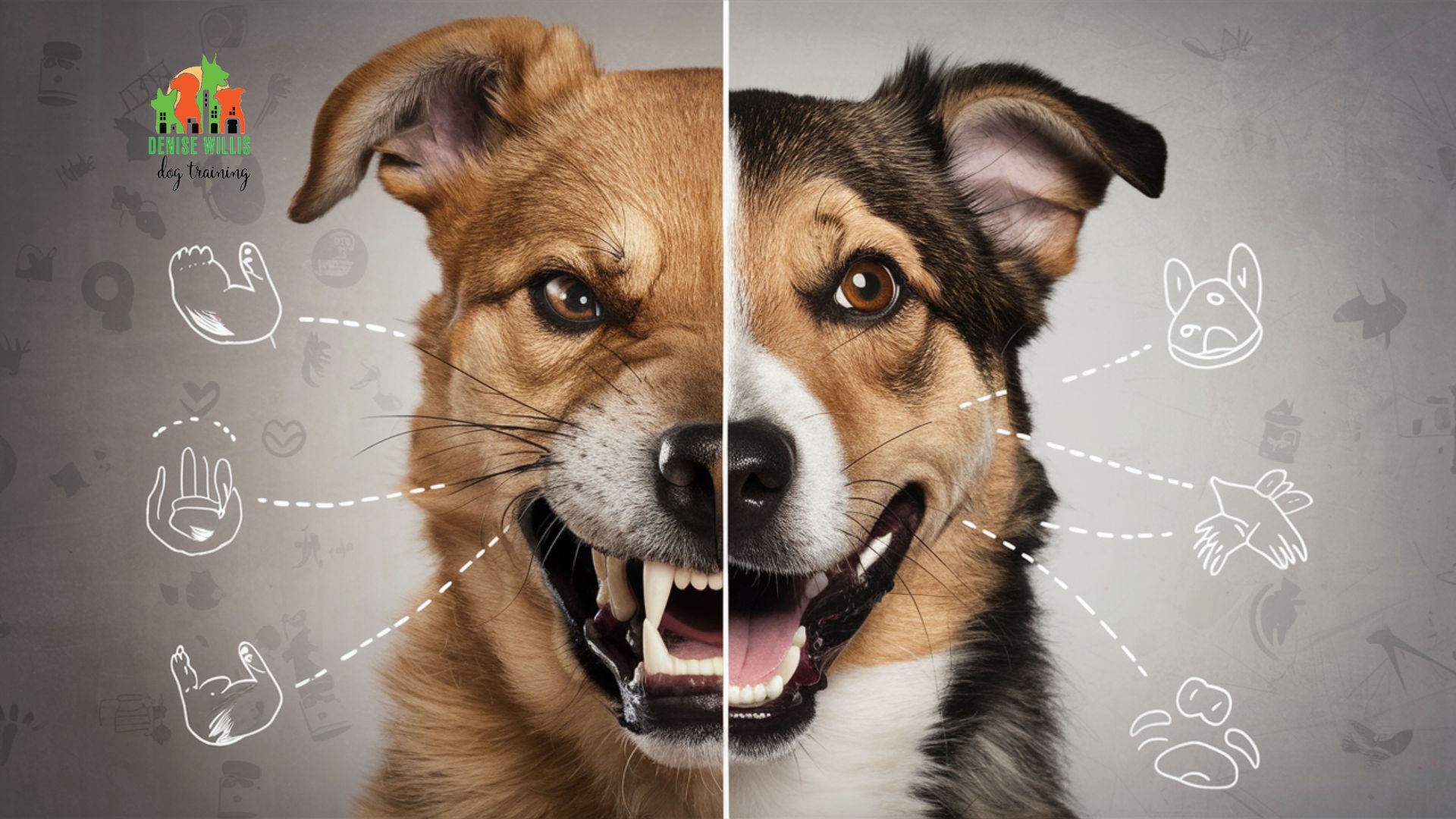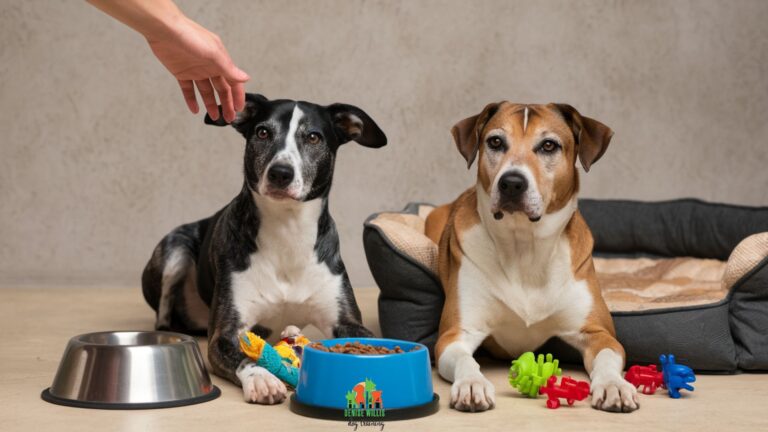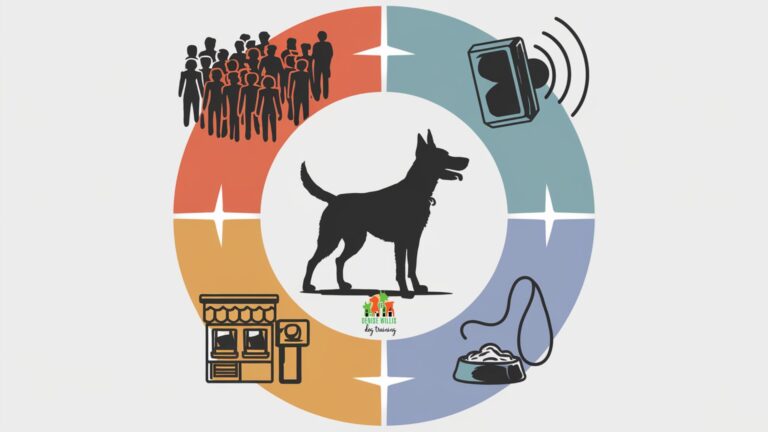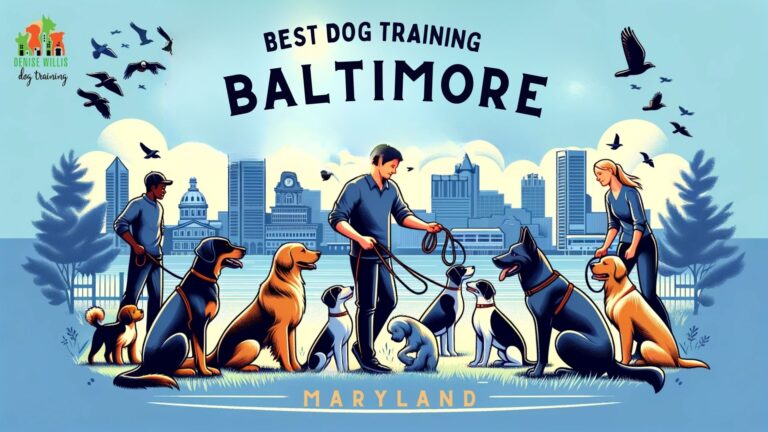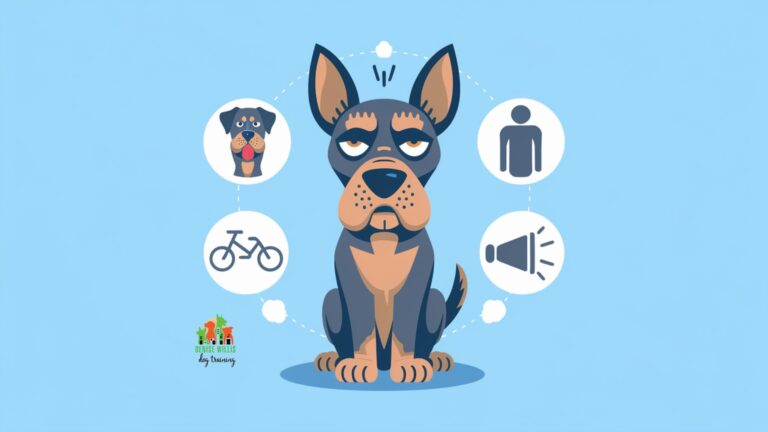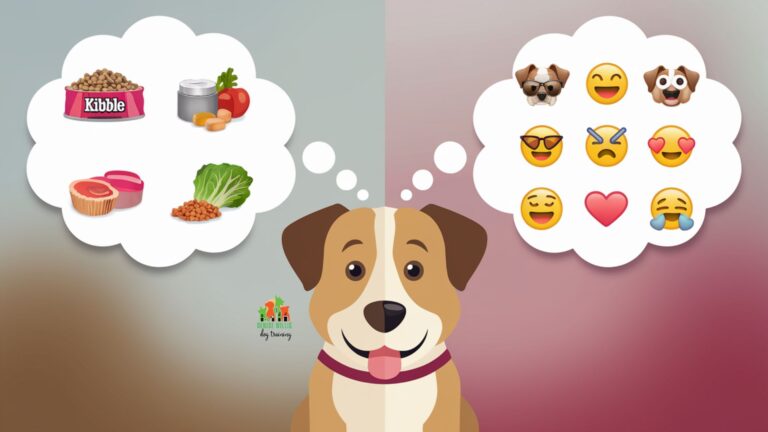5 Proven Strategies to Stop Your Dog’s Aggression Towards Other Dogs
📍 Service Area Notice: DW Dog Training provides in-person training services exclusively in the Greater Baltimore area. While our blog content is designed to help dog owners internationally, our hands-on training services are locally focused. For readers outside our service area, we hope you find value in our articles and welcome you to reach out with questions!
If you’re reading this, chances are you’re dealing with a furry friend who’s not playing nice with other pups. Trust me, I get it. As a professional dog trainer with decades of experience, I’ve seen it all – from the tiniest Chihuahua with a Napoleon complex to the gentlest giant who suddenly turns into Cujo at the dog park.
But here’s the thing: dog aggression isn’t a life sentence. With the right approach, patience, and a whole lot of love, we can turn that snarling Cerberus into a sociable sweetheart.
So, grab a cup of coffee (or a glass of wine, no judgment here), and let’s dive into the nitty-gritty of dog aggression. We’re going to explore five proven strategies that’ll help your pup become the “goodest” boy or girl at the doggy meetup.
But first, let’s talk about why your furry friend might be channeling their inner Grinch around other dogs.
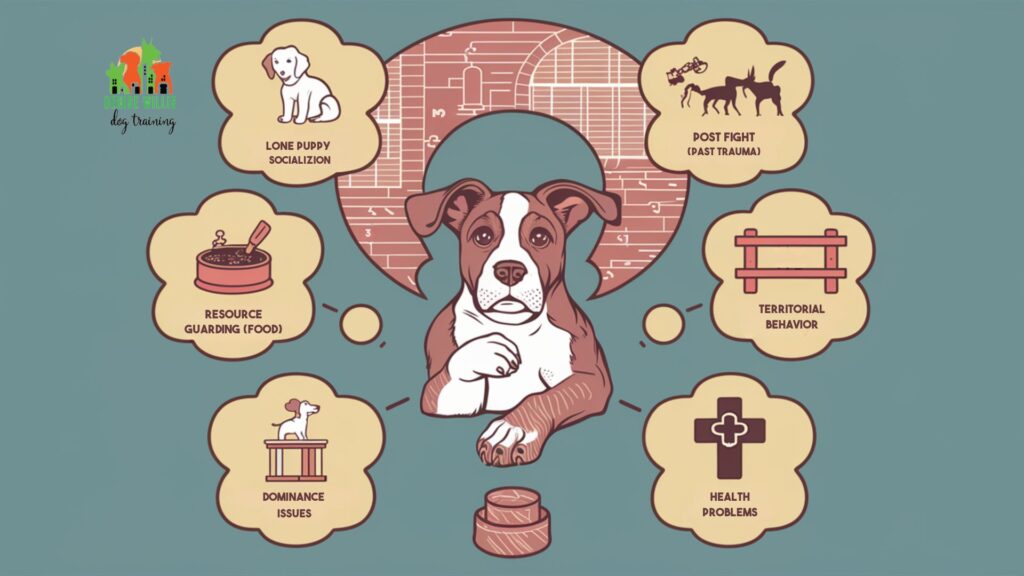
The Why Behind the Woof: Understanding Dog Aggression
Before we jump into the solutions, we need to get inside that adorable furry head of your pup. Dog-to-dog aggression isn’t just your dog being a jerk (even if it feels that way sometimes). It’s often their way of saying, “Hey, I’m not comfortable here!” or “Back off, buddy!”
Here’s the deal: dogs can show aggression for a bunch of reasons:
- Lack of socialization: Imagine if you’d never met another human until you were an adult. Pretty scary, right? Same for dogs who haven’t been properly introduced to their own kind early on.
- Past trauma: Dogs have long memories, especially for bad experiences. One nasty encounter can lead to a lifetime of “stranger danger” reactions.
- Resource guarding: Some dogs are the canine equivalent of that kid who never learned to share. They might get aggressive to protect their food, toys, or even you!
- Territorial behavior: For some dogs, their yard (or the whole neighborhood) is their kingdom, and other dogs are invaders.
- Dominance issues: Some pups fancy themselves the alpha and want every other dog to know it.
- Medical problems: Pain or hormonal imbalances can turn even the sweetest dog into a grouch.
Understanding these root causes is like having a secret decoder ring for your dog’s behavior. It’s the first step in turning that growl into a tail wag.
5 Proven Strategies to Stop Dog Aggression
Alright, now that we’ve got the “why” down, let’s talk about the “how.” Here are five strategies that I’ve seen work wonders over my years of training. Remember, every dog is unique, so you might need to mix and match these approaches to find what works best for your furry friend.
1. Call in the Pros: Professional Behavior Modification
Look, I know what you’re thinking. “But I can handle this myself!” Maybe you can, but here’s the truth: working with a certified dog behaviorist or trainer is often the fastest and most effective way to address aggression issues.
Here’s why:
- They can spot triggers that you might miss
- They’ll create a training plan tailored to your dog’s specific needs
- They’ll teach you how to safely manage your dog’s behavior (because let’s face it, nobody wants to be that person at the dog park)
- They provide ongoing support, because Rome wasn’t built in a day, and neither is a well-behaved dog
Remember, seeking help isn’t admitting defeat. It’s being a responsible pet parent who wants the best for their furry friend. Plus, it’s a lot less stressful than trying to figure it all out on your own while your dog turns every walk into a WWE smackdown.
2. Socialization Station: Controlled Exposure
Think of this as doggy diplomacy. We’re going to gradually introduce your pup to other dogs in a way that’s safe, controlled, and positive. Here’s how:
- Start with the chillest dogs you can find. We’re talking zen master level here.
- Use barriers like fences or leashes to keep everyone safe
- Keep the first meetings short and sweet. Quality over quantity, folks.
- Reward your dog for staying calm. Treats are your secret weapon here.
- Slowly increase the duration and closeness of these interactions
Remember, patience is key. This isn’t a race, it’s a journey. Let your dog set the pace, and don’t push too hard too fast. We’re aiming for progress, not perfection.
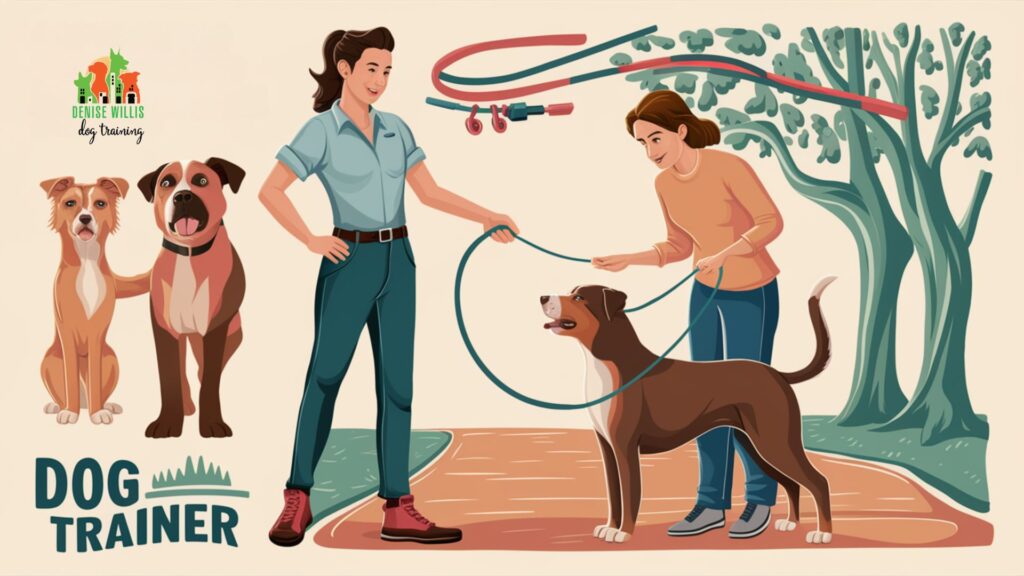
3. Obedience School is in Session: Training and Focus
Teaching your dog to focus on you and respond to commands, even when other dogs are around, is like giving them a superpower. It’s all about building that bond and trust between you two. Here’s what you need to do:
- Practice basic obedience commands every single day. Yes, every day.
- Use positive reinforcement. Treats, praise, toys – whatever makes your dog’s tail wag.
- Gradually introduce distractions during training. Start small and work your way up.
- Master the “leave it” command. It’s a lifesaver in tense situations.
- Work on recall in different environments. Your backyard, the park, the moon – okay, maybe not the moon.
Consistency is key here. The more reliable your dog’s obedience, the easier it’ll be to manage their behavior around other dogs. Plus, it’s a great way to tire them out mentally, which can help reduce overall anxiety and aggression.
4. Environmental Ninja: Managing Your Dog’s World
Sometimes, the best offense is a good defense. Managing your dog’s environment can prevent aggressive outbursts before they happen. Here’s how to be an environmental ninja:
- Choose quieter walking routes. Rush hour at the dog park? Maybe not.
- Exercise your dog during off-peak hours. Early bird gets the worm and avoids the crowd.
- Use a muzzle when necessary. It’s not cruel if it keeps everyone safe.
- Create a safe space at home where your dog can retreat. Think of it as their personal chill-out zone.
Remember, management is often a temporary solution while you work on long-term behavior modification. It’s not about avoiding the problem forever, but about setting your dog up for success while they learn.
5. The Doctor is In: Medical Evaluation
Sometimes, aggression isn’t just a behavioral issue – it can be a sign that something’s not right physically. That’s why a trip to the vet should be on your to-do list. Here’s what to do:
- Schedule a thorough check-up. Leave no stone unturned.
- Discuss any changes in behavior with your vet. Even small changes can be significant.
- Consider blood tests to rule out hormonal imbalances. Sometimes it’s all about chemistry.
- Explore potential pain-related causes of aggression. A grumpy dog might just be a hurting dog.
Addressing any underlying medical issues can sometimes resolve or reduce aggressive behavior dramatically. It’s like magic, but with science!
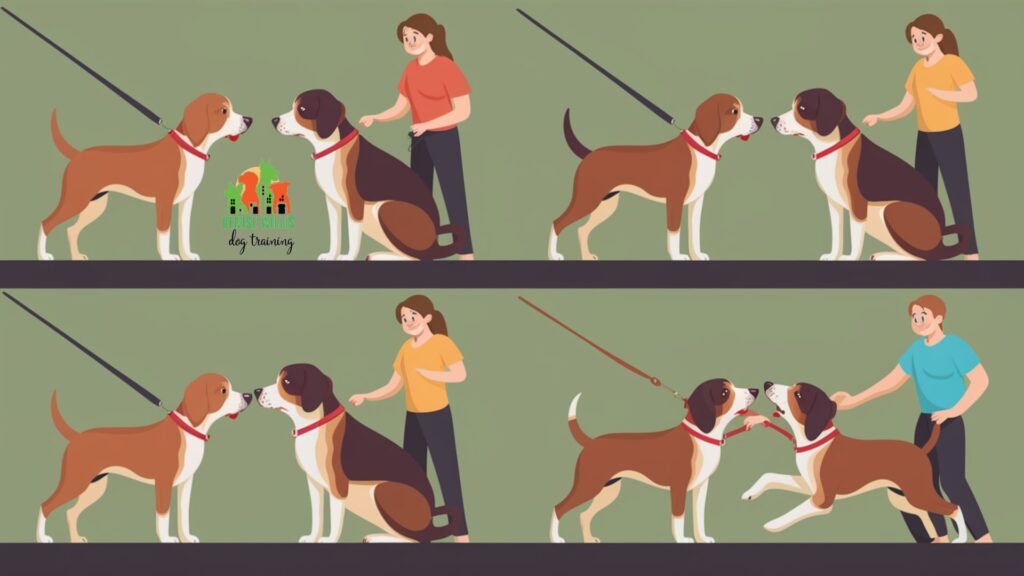
The Numbers Game: Statistics on Dog Aggression
Now, I know some of you data nerds out there (I see you, and I appreciate you) want some hard facts. So, let’s break down some statistics on dog aggression:
- Approximately 4.5 million people experience dog bites in the United States each year. That’s more than the population of Los Angeles!
- Children aged 5-9 are at the highest risk of dog attacks. So if you’ve got kids, this isn’t just about your dog – it’s about keeping the whole family safe.
- In a study of 65 aggressive dogs:
- 53.8% displayed defensive aggression (basically, the “please don’t hurt me” kind)
- 30.8% showed offensive aggression (the “I’m gonna get you first” type)
- 3.1% exhibited predatory aggression (the “you look like a squirrel” variety)
- Male dogs were involved in 58.5% of aggressive incidents in the study. Ladies, you’re not off the hook, but the boys are leading this unfortunate race.
- The median age of dogs at the time of biting was 4 years. So much for the terrible twos!
Here’s a quick visual breakdown:
| Type of Aggression | Percentage |
| Defensive | 53.8% |
| Offensive | 30.8% |
| Predatory | 3.1% |
| Gender of Aggressive Dogs | Percentage |
| Male | 58.5% |
| Female | 41.5% |
These numbers aren’t meant to scare you. They’re meant to show you that dog aggression is a common issue, and you’re not alone in dealing with it. But remember, your dog is an individual, not a statistic. These numbers give us insight, but your dog’s specific needs and behaviors are what really matter.
Frequently Asked Questions: Your Burning Questions About Dog Aggression Answered
Alright, let’s tackle some of the questions I get asked most often about dog aggression. Consider this your cheat sheet for impressing your friends at the dog park (once your pup is ready for that, of course).
- Q: Can aggression in dogs be cured completely? A: “Cured” is a strong word. Most dogs can show significant improvement with proper training and management. The goal is to make your dog comfortable and manageable around other dogs, even if they never become the life of the doggy party.
- Q: How long does it take to see improvements in my dog’s aggressive behavior? A: Ah, the million-dollar question! The timeline varies depending on the dog, the severity of the aggression, and how consistent you are with training. Some dogs show improvement in a few weeks, while others might take months. Remember, we’re not running a sprint here – it’s a marathon.
- Q: Is it safe to use a muzzle on my aggressive dog? A: When used properly, muzzles can be a safe and effective tool. Think of it like a seatbelt for your dog – it’s not about punishment, it’s about safety. But it’s important to introduce the muzzle properly and use it as part of a broader training program, not as a quick fix.
- Q: Can neutering or spaying help reduce aggression in dogs? A: It can, especially for male dogs with hormone-driven aggression. But it’s not a guaranteed solution. It’s like taking away the matches from a pyromaniac – it might help, but you still need to address the underlying desire to start fires.
- Q: Are certain breeds more prone to dog-on-dog aggression? A: While some breeds might have a higher tendency towards aggression, individual personality, upbringing, and experiences play a much larger role. It’s like how not every teenager with a skateboard is a delinquent – stereotypes only get you so far.
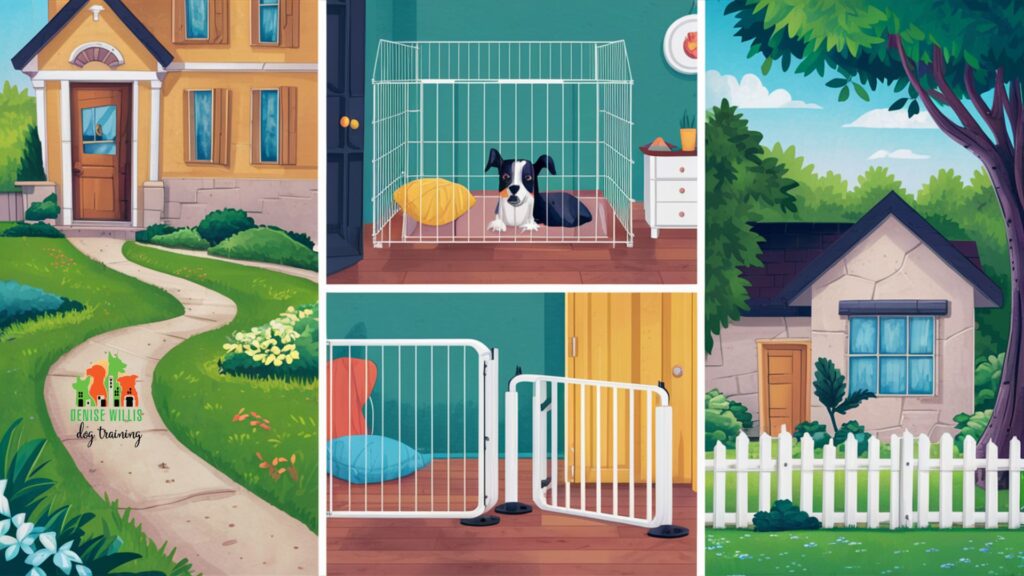
The Toolbox: Recommended Products for Managing Dog Aggression
Now, I’m not one for quick fixes or miracle cures, but there are some products out there that can be genuinely helpful when you’re working on your dog’s aggression. Think of these as tools in your training toolbox – they’re not solutions on their own, but they can support your overall efforts:
- ThunderShirt Classic Dog Anxiety Jacket: This pressure wrap can help calm anxious or aggressive dogs. It’s like a constant hug for your pup.
- PetSafe Gentle Leader Head Collar: This gives you better control during walks, which can help reduce reactivity. It’s like power steering for your dog.
- KONG Classic Dog Toy: Great for redirecting attention and providing mental stimulation. A busy dog is usually a happier, less aggressive dog.
- PetSafe SSSCAT Spray Pet Deterrent: This can help create boundaries and manage territorial behavior. It’s like an invisible fence, but less shocking (pun intended).
- Zesty Paws Calming Bites for Dogs: These natural supplements may help reduce anxiety-driven aggression. Think of it as doggy chill pills.
Remember, while these products can be helpful, they should be used in conjunction with proper training and under the guidance of a professional. They’re not magic wands, but they can certainly make your job easier.
Further Reading: Dive Deeper into Dog Aggressive Behavior
If you’re anything like me, you probably want to learn everything you can about your dog’s behavior. Knowledge is power, after all! Here are some other articles from our site that dive deeper into specific aspects of dog aggression:
- Dog Aggression in Older Dogs: Compassionate Approaches to Caring for Your Senior Canine
- Dog Aggression After Surgery: Professional Insights into Post-Operative Behavioral Shifts
- Dog Aggression Vs. Playfulness: A Comprehensive Guide for Responsible Owners
- Dog Aggression Toward Children: Understanding the Root Causes and Effective Solutions
These articles can help you understand the nuances of dog aggression in different situations. After all, knowledge is power when it comes to helping our furry friends!
The Bottom Line: There’s Hope for Your Hound
Alright, let’s wrap this up. If you’ve made it this far, congratulations! You’re already proving that you’re a dedicated dog parent who’s willing to go the extra mile for your furry friend. That’s half the battle right there.
Here’s what I want you to take away from all this:
- Dog aggression is common, but it’s not a life sentence.
- Understanding why your dog is aggressive is the first step to solving the problem.
- Professional help, controlled socialization, consistent training, environmental management, and medical evaluation are your best tools for addressing aggression.
- Patience and consistency are key. This isn’t an overnight fix, but the results are worth it.
- You’re not alone in this journey. There are resources, products, and professionals out there to help you every step of the way.
Now, I know we’ve covered a lot here, and you might be feeling a bit overwhelmed. That’s okay! Rome wasn’t built in a day, and your dog won’t become a social butterfly overnight. But every step you take, every training session you have, every positive interaction your dog experiences – it all adds up.
Remember, the goal isn’t to have a “perfect” dog (because let’s face it, even the best dogs have their moments). The goal is to have a dog that you can manage safely, that can coexist peacefully with other dogs, and that can enjoy life without constant stress and fear. And trust me, that goal is absolutely achievable.
So, what’s your next step? Well, if you’re dealing with dog aggression and you’re not sure where to start, or if you’ve tried some of these strategies and you’re not seeing the results you hoped for, it might be time to call in the cavalry. That’s where we come in.
At DW Dog Training, we’ve been helping dogs and their humans overcome aggression issues for decades. We’ve seen it all, from the mildest cases of leash reactivity to full-blown aggressive behaviors. And you know what? We’ve helped countless dogs turn their behavior around.
Don’t let dog aggression hold you and your pup back from enjoying life to the fullest. Whether you’re struggling with dog-to-dog aggression, aggression toward people, or any other behavioral issue, we’re here to help. Our personalized training plans are designed to address your specific situation and your dog’s unique needs.
Ready to take the first step towards a happier, more harmonious life with your dog? Contact us today to schedule a consultation. We’ll work together to create a tailored plan that addresses your dog’s specific needs and helps you both navigate the world with confidence.
Remember, every dog deserves a chance to be their best self, and every owner deserves to enjoy a peaceful, loving relationship with their furry friend. Don’t let aggression stand in the way of that bond. Reach out today, and let’s turn those growls into tail wags!
Your pup has the potential to be a social superstar – they just need a little help to get there. And trust me, the journey is worth it. There’s nothing quite like seeing a formerly aggressive dog happily playing with their new canine friends, or confidently walking past other dogs without a care in the world.
So, are you ready to embark on this transformative journey with your four-legged friend? The path to a happier, more sociable pup starts with a single step. Take that step today. Your dog will thank you for it (probably with lots of slobbery kisses).
Here’s to wagging tails, happy barks, and peaceful walks in your future. You’ve got this, and we’ve got your back. Let’s make those dog park dreams a reality!
Key Takeaways
Before we wrap up, let’s recap the main points we’ve covered:
- Dog aggression is often rooted in fear, lack of socialization, or past trauma.
- Professional behavior modification can provide tailored solutions for your dog’s specific needs.
- Controlled socialization is crucial for helping your dog build positive associations with other dogs.
- Consistent obedience training gives you better control in challenging situations.
- Managing your dog’s environment can prevent aggressive outbursts while you work on long-term solutions.
- Always rule out medical causes of aggression with a thorough veterinary check-up.
- Patience and consistency are key – improvement takes time, but it’s absolutely achievable.
- You’re not alone in this journey – professional help and resources are available to support you.
Remember, addressing dog aggression is not just about changing your dog’s behavior – it’s about strengthening the bond between you and your furry friend. With the right approach and support, you can help your dog become a happier, more confident, and sociable companion.
Don’t hesitate to reach out to us at DW Dog Training. We’re here to guide you every step of the way on this rewarding journey. Together, we can turn those challenging walks into enjoyable adventures, and those tense dog encounters into tail-wagging meetups.
Your dog’s transformation starts here. Are you ready to take the first step?
We Want to Hear from You!
Alright, fellow dog lovers, we’ve covered a lot of ground here, but the conversation doesn’t have to end! Your experiences, questions, and insights are incredibly valuable, not just to us, but to other dog owners who might be facing similar challenges. So, let’s keep this discussion going!
Share Your Story
Have you dealt with dog aggression before? What worked for you? What didn’t? Your story could be the beacon of hope that another struggling dog owner needs right now. Drop a comment below and let us know about your journey.
Got Questions?
Did this article spark any questions in your mind? Maybe you’re wondering how to apply these strategies to your specific situation, or perhaps you have a unique challenge we didn’t cover. Don’t be shy – ask away! Your question might be exactly what someone else needed to ask but didn’t know how.
What’s Your Take?
We’ve shared our proven strategies, but we know there’s always more to learn. What do you think about these approaches? Do you have any additional tips or tricks that have worked wonders for your pup? We’d love to hear your perspective!
Need Clarification?
Was there a part of the article that left you scratching your head? Let us know! We’re here to help, and we can always expand on topics that need more explanation.
Success Stories Welcome!
If you’ve already implemented some of these strategies and seen positive results, we want to hear about it! Your success story could be the motivation someone else needs to take that first step.
Remember, addressing dog aggression is a journey, and every journey is unique. By sharing our experiences and knowledge, we create a supportive community that benefits dogs and owners alike. So don’t be a stranger – let’s keep this conversation going!
Leave your comments, questions, or stories below, or reach out to us directly if you prefer. We’re all in this together, and together, we can help create a world of happier, more sociable dogs!

